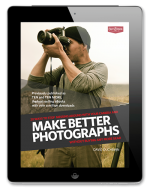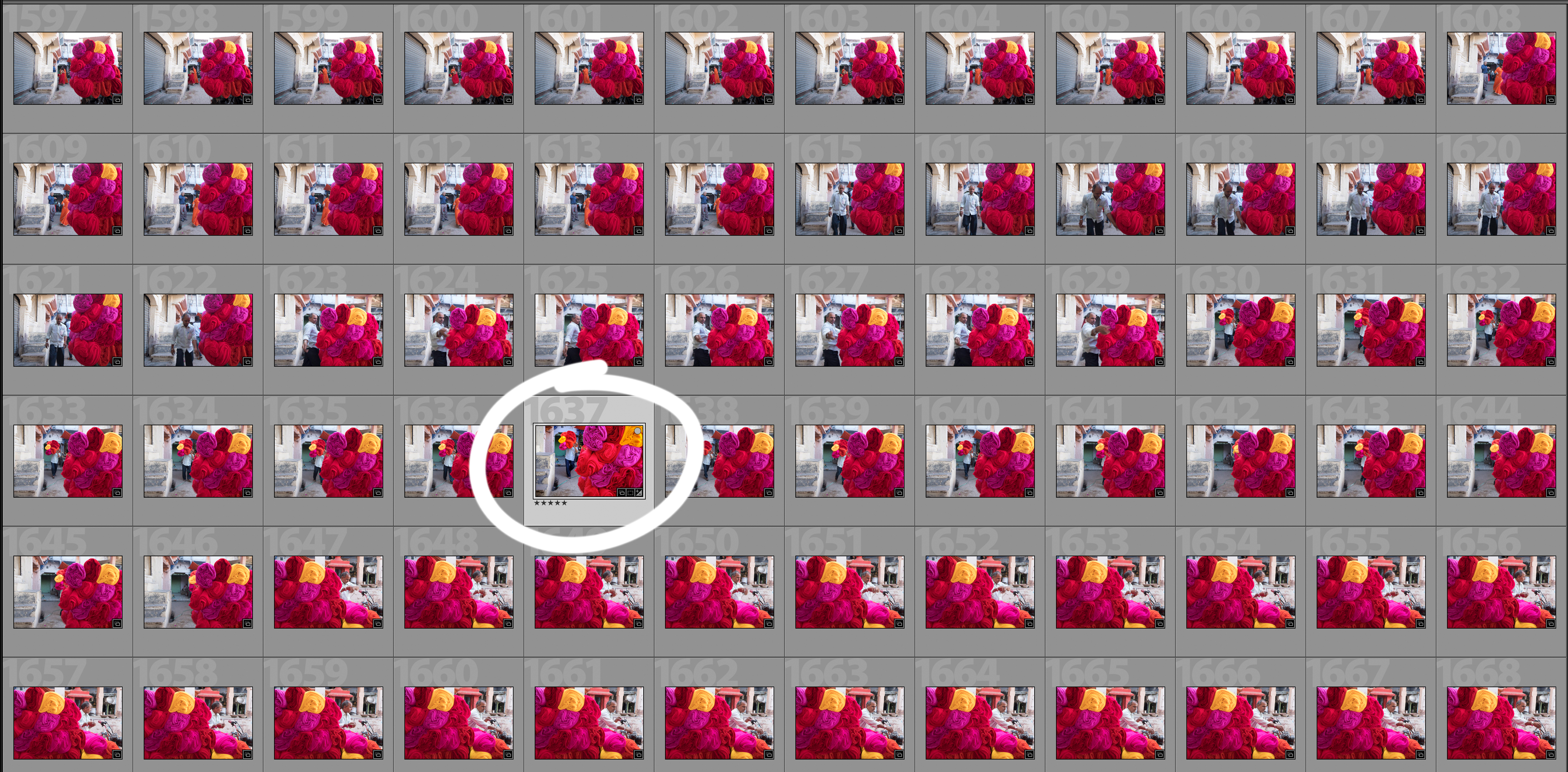No one nails it on the first shot.
No one.
I know: you have this one friend who got lucky back in 1986. One shot. Nailed it. You might have done so, too—that one time you raised the camera to your face, made one frame and it’s now your absolute favourite photograph and it hangs on your wall to this day so take that, duChemin. I know. I have a couple like that as well. Two or three images that defied the odds.
The others, the hundreds or thousands of images that are my best work, all were made after sketching them out. Every photographer you look up to has a process, and almost every iconic image you love is a result of that process, flanked on the contact sheets or Lightroom libraries by many others that never made the cut.
I call my own process “sketching.”
Sketch images are the photographs I make to see what it looks like. I try different angles, make the photograph and see what it feels like. I change the angles until I get it feeling the way I want it to. Along the way, I might change a lens because it wasn’t my perspective at all, but the lens that wasn’t really working the way I had hoped. And I wait for moments, sometimes realizing my subject is better expressed with a slower shutter speed, so I try that, and I evaluate the results. I do it quickly, but I let those images give me feedback. And slowly, bit by bit, I get closer to the magic. Bad images slowly get stronger and lead to good images.
Other people just bang off a bunch of shots until they get it right and they look back at those first frames and think they suck. And they might. But they aren’t crap. They aren’t garbage. They’re necessary steps to get to the better frames. Sometimes I need only 2 or 3 of them to get myself firing on all cylinders. Sometimes I need 20. And sometimes I sketch something out for a year or more, returning, never quite getting it but getting closer.
This shift in perspective, from seeing your preliminary images as junk to seeing them as important and valuable, allows you to be more playful with them. It allows you to be less critical of them and instead to let them lead you. What do you like about one particular frame? What could you do differently? What doesn’t work for you and how can you exclude those things? What changes can you make to give your subject its best expression? Do you need to wait for better light? Better moments? Do you need to change your perspective, your lens, your shutter speed?
See the difference in approach? One, the “everything I’m shooting is crap” approach, leads to frustration. The other, the “everything I’m making is getting me closer to a better final image” approach, leads to creativity, play, experimentation, and—ultimately—to stronger photographs.
It also makes me a happier person. I have terabytes of sketch images. They are the grease that got me to my growing handful of photographs I do love, the ones for which I am proud. They show me my progress in ways terabytes of “mistakes” or “crap” would not. I am progressing. So are you. And you’ll do so faster if you learn from your early efforts.
No writer sits down and writes a novel or a screenplay or even an article in one easy draft. They make plenty of false starts and unreadable first drafts. But those drafts are necessary stepping stones. They are way stations without which the final book or play never happens. That’s how I see sketch images. I do not mean pray and spray—I do not mean mindlessly mashing down the shutter button. But most of you are not in that category.
I don’t worry you’re making too many images; I worry you aren’t making enough images.
I worry you’re stopping at a couple frames, shrugging and putting your camera down because “it’s just not working.” I worry you think it’s a lack of talent or you just don’t have “the eye” that others do. Nonsense. You’re just not working the process. You’re giving up too soon.
I came home from Varanasi this spring with 9800 sketch images that I will never show the world. But I needed to make them in order to get to the 24 that I love. The screen shot at the top of this post? I made 335 sketches to get to the one I love. I’m not trying to make myself feel better about the ones that didn’t work; I feel great about them because without my sketches I never would have arrived at my final photographs.
Your so-called failure rate doesn’t matter. Mine gets worse over time as I loosen up and become more willing to experiment and try new things, caring less about each individual frame and more about where they might lead me.
There is no badge of honour for the artist with the cleanest, tidiest process. There is no reward for using fewer memory cards. No one will judge you for the images you’ll never show them.
The only thing that matters is that you make your best work and that you trust whatever process—messy or otherwise—that gets you there.
David.

PS – Want more like this? I send these articles out every two weeks to photographers around the world who want to improve their craft and explore their creativity and I’d love to include you. Tell me where to send it and I’ll send you a copy of my best-selling eBook Make Better Photographs, as well bi-weekly articles, first-glimpse monographs of my new work, and very occasional news of resources to help you keep moving forward in this craft we love.
“Each and every one of your emails inspire and motivate me to want to jump right out of my chair away from my computer and shoot for the love of it . Thank you David.” – Millie Brown


Comments
Such a great write up! We learn from failure. I do not believe people are born with a gift… rather they develop a love for certain subject which drives them to not quit and work through an evolving process to achieve their goals – great reading David!!
good read, David! People often stress out about the number of keepers they are getting and feel relieved when I say I keep like 5% of the photos.
Totally agree, David. All it takes is one slight little difference to throw a whole frame off or make the image. So take a million images if you need to. Whatever it takes to get the right frame.
What I wonder about are those large-format photographers who can only bring a few plates with them out into the field. If they can’t afford to make mistakes there then how can they be sure that they left with the best frames possible?
It is refreshing to finally hear somebody say it out loud. I am so tired of the whole idea of assuming one can get the perfect shot and they should only take one lens with them as if there is some nobility in it. Add to that “straight out of camera.”
Thanks David. I was just thinking about this idea of process or rather my lack of one and needing one. Thanks for the jumping off point with all your questions you ask as you “sketch” a photo. I’d add to your list of sketch questions: “What is this subject trying to say? What do I want it to say? What is the story here?”
I made some images this past weekend that stirred my insides. Not having the best of nights, I let go and rolled with the punches…and made images with my phone…in the moment. Later, the words came alongside. Together, they had my heart thumping and my face smiling big. Technically precise? Hell no. For everyone? Absolutely not. Full of life? Saturated.
In the end, I ‘sketch’ best when I let go…of rules, plans, [fill in the blank].
Life is rough around the edges and I’m finding the more I incorporate that into my photography….I find the fuel that I need — when I embrace the everyday.
Cheers to what takes us there….
Thanks as always for your words David.
I read twice this article and willing to try out this approach right away!
Have a question. After you arrive a final photograph of hundreds of sketch images (from the above post), how do you manage the rest? do you still keep them all? Or save best 10 of 335 sketches? Say I might want revisit at the sketches after few months but it is a quite daunting task to see all of them again and a waste of time in my opinion. I really want to know how do you manage the enormous amount of photos.